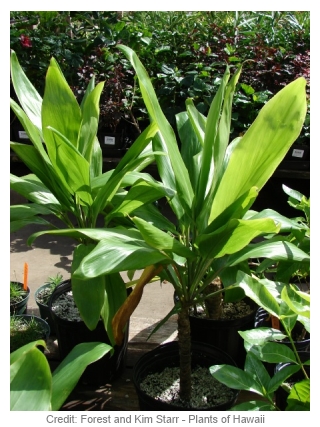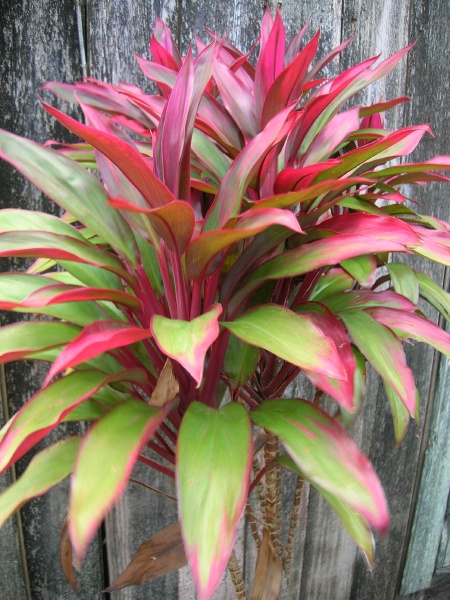





Although this plant has the common name of Hawaiian ti, it's not native to Hawaii. However, the people of Hawaii have found many uses for this plant including making hula dance skirts and surf board covers.
There are three main varieties which are the tricolor (green with red, pink and cream), red edge (green with red streaks), and plain green. The most popular grown indoors is the red edged type , because it's so colorful. There are also dwarf types which are cultivated and sold.
Flowering: The Ti plant produces small whitish or pink colored flowers in it's natural habitat, but it's very unlikely to bloom indoors. No one minds this because the plant's main attraction is it's colorful leaves.
Foliage: The leaves on the Ti plant can vary in width and length depending on which variety it is, although most leaves grow to about 1ft long. The leaves branch off from the main trunk in a new roseste of leaves, similar to how a dracaena plant does. The lower leaves also die off just like a dracaena, which is normal to encourage new growth.
Care level: While these plant's do need certain conditions provided they are not hard to grow and maintain, although they're a bit tricky for beginners to keep them looking attractive. If they are not taken care of properly they can look very untidy.
Poisonous: The Hawaiian ti plant is said to be toxic for cat's and dog's if ingested.


Copyright © www.100flowers.win Botanic Garden All Rights Reserved